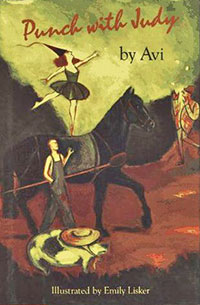 When I was a student at the University of Wisconsin (Madison) my focus was theatre. As it happened, the Theatre Department organized a group of students to perform Othello, Shakespeare’s great tragedy in schools throughout the large state of Wisconsin. This was, to put it mildly, a deeply edited version of the play, which, when we performed it, lasted only one hour. Normally, it should take two to three hours.
When I was a student at the University of Wisconsin (Madison) my focus was theatre. As it happened, the Theatre Department organized a group of students to perform Othello, Shakespeare’s great tragedy in schools throughout the large state of Wisconsin. This was, to put it mildly, a deeply edited version of the play, which, when we performed it, lasted only one hour. Normally, it should take two to three hours.
I was brought on just as stage manager, because it was well known among my theatre pals that I was a bad actor. For one thing, I could not remember lines.
At the last moment however, one of the actors dropped out, and I (since I was there) was asked to play his part, Lodovico. It is this character who gives the last, somber lines of the tragedy.
We loaded up the station wagon (as SUVs were called) with costumes and sets. Then we seven actors toured the state, performing in gyms. We had a great time.
If you know the play, it ends with bodies on the floor, and terrific tragedy. Then Lodovico—that’s me—comes on stage, and gives the last grief-loaded speech.
Except I could never remember my lines.
The cast would be on stage staring at me, wondering what I might say for that performance. Moreover, they were struggling hard to keep from laughing. Tragedy? Comedy?
Jump years ahead. I chanced to see Charlie Chaplin’s 1928 film, The Circus. As a life-long fan of Chaplin I always loved how he was able to induce laughter from sadness. Indeed, the notion of someone slipping on a banana peel is considered funny, ignoring that the person who has slipped is experiencing pain.
After watching that film, I wondered if I could write a book in which I might achieve this odd mixture: pain and laughter.
All this is the origin of my book, Punch with Judy. It tells the tale of a woebegone troupe (see above) of performers. When they try to be funny, they are not. When they are sad, or in pain, it is very funny.
The book is literally a slapstick comedy. A slapstick, in fact, is a Commedia dell’arte device: two thin paddles are attached and between the two paddles is a wedge. When character A hits Character B with a slapstick it makes a big noise but does not hurt. However, if that wedge is removed the slapstick, when used, will hurt. But it may still be funny for the audience to watch it happen. You get the idea.
I won’t pretend that this is one of my more popular books. Sometimes I think it should have been a play. That said I have always been extremely fond of it. Maybe that’s my tragedy. Or comedy. Hard to know. Maybe both.
1 thought on “Story Behind the Story #27: <em>Punch With Judy</em>”
Punch with Judy is one of my favorite books! It’s really unfair it’s not more popular than it is. It’s so clever and enjoyable, totally satisfying! I wouldn’t change a thing about it, Mr. Avi.